Last week I visited Blackpool for the first time, to help facilitate an event with local residents looking at high street renewal. The event was organised by The Glass-House Community Led Design in partnership with our Design Group and Historic England, to collaboratively explore how historic high streets can be reimagined to better serve their local community.
Historic high street regeneration has recently received a £95 million investment by the government, and Historic England is managing a big chunk of that to help 69 projects in England to find new ways to revive their historic high streets. This funding includes a cultural programme (in collaboration with Arts Council) and requires meaningful engagement between different partners (local authorities, businesses, cultural and civil society organisations, and community groups) to celebrate and enhance the uniqueness of these places through sustainable interventions.
Blackpool is one of the places in the programme and we were keen to explore the perceptions of local people about their place, its problems and its potential. Blackpool is a well-known seaside resort with identifiable landmarks such as the Blackpool promenade and North Pier, the Blackpool Tower (below), and Winter Gardens, a large entertainment and conference centre which we were pleased to have as our venue for the evening. The town boomed in the decade after the war, however many factors led to its decline, such as transport connections, people’s travel preferences etc. Tourism remains the main source of its economy, but the town is highly deprived in multiple fronts: employment, health, crime and living standards. With various regeneration projects already under way, our focus was on bringing people together to explore what they perceive as unique in their place, what are their needs and aspirations and how they can achieve them through collaborative working.
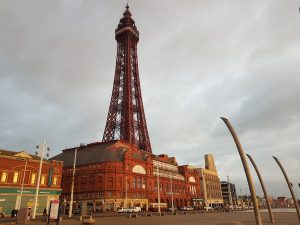
To start the conversation participants were organised in groups and each was invited to consider one of four keywords: sustainability, diversity, connection and power. The workshop was very fast paced; in the course of 2 hours, about 30 participants went from discussing the keywords, to generating ideas for actions to address the issues identified, and to building a model to represent their idea.
I was sat at the diversity table. We discussed diversity from different perspectives, in relation to culture, age, and disability but also as a mindset, a guiding principle for action. We talked about integration, empathy, and about alternative, more inclusive, ways of being and acting. With these came different requirements about the quality of spaces in the town and the types of activities or functions they perform or enable. We talked about green spaces, and about activities that are not strictly economic in nature, where people can meet, interact and learn from one another. The main idea that emerged in my table was that of taking unused shops and creating spaces which the community can occupy and use for a variety of activities. The model incorporated gardens and food growing spaces, spaces for young people, quiet spaces, repair shops, spaces for art, sports grounds, and a learning centre.
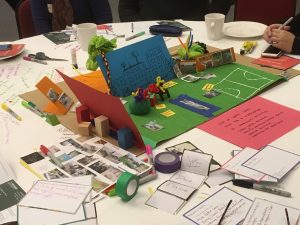
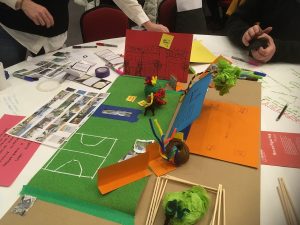
The sentiments were similar in the other tables. They all emphasised a need to reconnect with the natural environment, and a need to bring people together and nurture community activity. Interestingly the focus was on the high street (and indeed there were diverging perceptions of where the high street is in a town like Blackpool) but on the town centre as a whole. A sense of pride about the town, its history and its people, was undercurrent among participants in all age groups, which to me showed that there is plenty of untapped potential to build on.
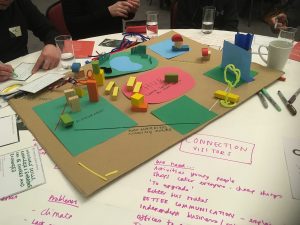
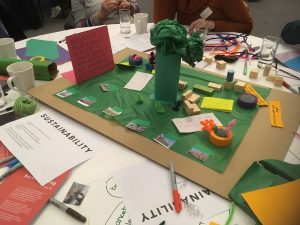
How all this may feed into the High Streets programme remains to be seen, but I felt that people left the room with some new ideas, some new connections and a renewed willingness to make things happen. In my view, a key to success in the long term will be to adopt a truly inclusive attitude to collaboration, to extend reach and make communication transparent. I had a very diverse table, with ‘pensioners’ working alongside young people, entrepreneurial spirits and environmentalists, but there is still a way to go to adopt and scale up the approach of the workshop within the regeneration programme.
I will be following with interest what happens in Blackpool, and hope I get to visit the town again when it is summer!
Credits
The photo of the Blackpool Tower is courtesy of Sophia de Sousa, The Glass-House Community Led Design

Leave a Reply